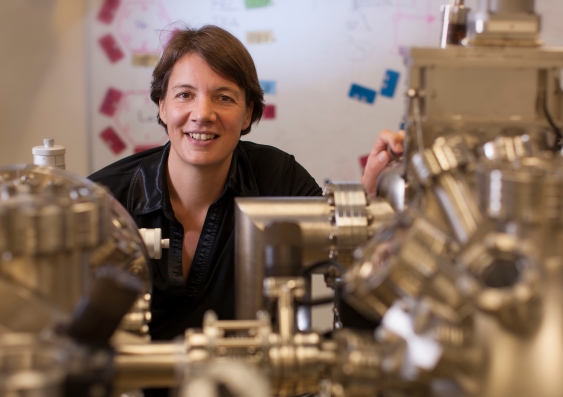Major innovation boost for UNSW’s quantum mission
UNSW Australia welcomes the federal government’s announcement today of a $26 million investment in the University’s world-leading quantum computing research.
UNSW Australia welcomes the federal government’s announcement today of a $26 million investment in the University’s world-leading quantum computing research.

Denise Knight
UNSW Media Office
0405 207 685
d.knight@unsw.edu.au
UNSW Australia has welcomed the federal government’s announcement today of a $26 million investment in the University’s world-leading quantum computing research.
The major funding boost over five years will support the development of silicon quantum computing technology in Australia in association with the Australian Research Council (ARC) Centre for Quantum Computation and Communication Technology, headquartered at UNSW.
It is based on a focused, ambitious and targeted program to build a 10 qubit prototype – demonstrating all the fundamental criteria of a scalable quantum computer – within five years.
The announcement has been made as part of the federal government’s $1.1 billion National Innovation and Science Agenda.
“Australia needs to take advantage of and evolve with the rapid pace of this technological change,” the government’s statement said.
“If Australian researchers are successful in developing a quantum computing capability, it would mean the development of a valuable new industry.
“Quantum computers have the potential to solve problems in minutes that would take conventional computers centuries. The technology will transform Australian and global business, from banks undertaking financial analysis, transport companies planning optimal logistic routes, or improvements in medical drug design.”
UNSW President and Vice-Chancellor Professor Ian Jacobs said: “UNSW researchers, led by Scientia Professor Michelle Simmons, are currently leading the global race to build the world’s first quantum computer.
“I applaud the government’s vision in recognising the global significance of this research. It is a wonderful funding boost and follows a substantial investment by UNSW in this ground-breaking work,” Professor Jacobs said.
Director of the ARC Centre of Excellence for Quantum Computation and Communication Technology Professor Simmons welcomed the announcement.
“We are delighted by this news. Quantum computing is a transformational technology in which Australia has an international lead, and there is now an opportunity for translating this research here in Australia. It is based on a focused, ambitious and targeted program to build a 10 qubit prototype – demonstrating all the fundamental criteria of a scalable quantum computer – within five years,” said Professor Simmons.
“This announcement sends a very powerful message about supporting internationally leading Australian research in areas of breakthrough technology. Our program has had backing from visionary Australian companies who are technology leaders in their space, such as the Commonwealth Bank, who see the long-term benefit to their organisation.”
Without a boost to public and private investment, Australia would have been at risk of missing out on the long-term benefits of the research conducted at the ARC Centre of Excellence, Professor Simmons said.
Quantum computing in silicon is an entirely new system at the atomic-scale and Australia leads the world in single atom engineering. In the long term, one of these next-generation quantum computers has the potential to exceed the combined power of all the computers now on Earth for certain high value applications. They will be ideal for searching huge databases much faster than conventional computers, and for performing tasks beyond the capability of even the most powerful supercomputers, such as modelling complex biological molecules for drug development.
Professor Jacobs said the federal government’s broader strategy to boost the country’s innovation capacity is an important development and recognises the essential role greater collaboration between industry and universities will play in securing future economic and social prosperity.
“The national Innovation Statement is an important contribution to the ongoing effort by governments, universities, industry and research institutions to scale up innovation and work more collaboratively for a far greater impact.
“Universities clearly play a key role in that agenda and by working effectively with industry, government and leaders across the entire innovation ecosystem, we have a profound impact,” he said.
“UNSW welcomes the Prime Minister’s commitment to major research infrastructure, which supports the entire innovation agenda. We particularly welcome the long-term commitment over a 10-year period for the National Collaborative Research Infrastructure Strategy.”
This announcement sends a very powerful message about supporting internationally leading Australian research in areas of breakthrough technology.
UNSW is at the forefront of innovation. It leads nationally in industry-linked research funding under the ARC Linkage Grant scheme; has the largest student start-up program in Australia; and was one of the first adopters of the world-leading easy access IP scheme.
“We see the creation of intellectual property and knowledge as a national treasure and asset, to be shared with society. We share our knowledge and innovation with industry, government and society through our teaching, consultancy, collaborative and contract research, licensing, company creation, networking and professional development,” Professor Jacobs said.
The University’s new 10-year strategy, UNSW 2025, includes a bold commitment to significantly scale up our innovation efforts. Some of these commitments include: